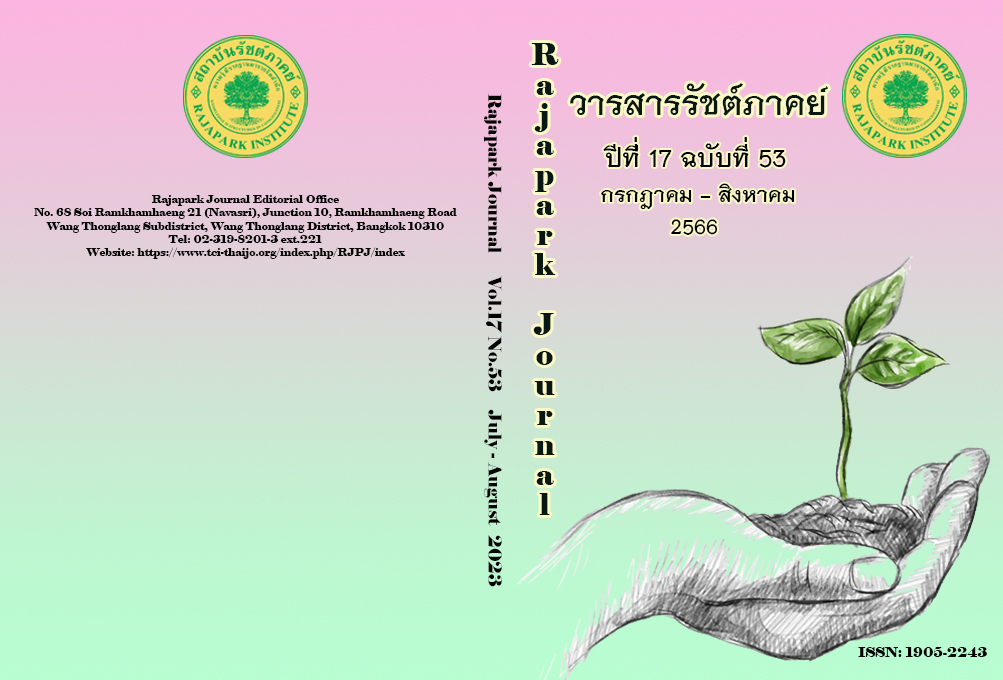The Analysis of Thai Political Environment through the Political Songs 1932-2021
Main Article Content
Abstract
The objectives of this research are (1) to study the political ideas of the government and dissenting groups through political songs; from the era of government change, 1932 - 2021 (2) to analyze the political context that affects the creation of political songs (3) to show that the government and dissenting groups have used songs as a tool to reach the people to instill political ideology (4) to demonstrate the role of songs. And music as a tool to achieve political policies of both the government and dissenting parties, and (5) to study the strategies of political groups in presenting political songs in each era. It is qualitative research. Use a documentary research format. And related song content the informants were divided into 3 groups. The results of the research found that (1) the political ideas of the government and dissenting groups through political songs were divided into 3 periods; (2) the political environment both inside and outside the country that affected the creation of political songs (3) Songs, which are soft power, are used as tools to reach the people. To instill political ideology (4) Political songs have always been used as a means of communication to propagate and instill ideology. In the past, the government was the sole controller of radio and television media and people are still not aware of political participation. (5) The presentation of political songs by the government from 1932 - 2021 may not have changed much. Most of them are songs that have a message about creating love and unity.
Article Details

This work is licensed under a Creative Commons Attribution-NonCommercial-NoDerivatives 4.0 International License.
Views and opinions appearing in the Journal it is the responsibility of the author of the article, and does not constitute the view and responsibility of the editorial team.
References
Borton, H. (1983). The New Century of Japan from Perry to the Present. (Wuttichai Moolsin and Suphattra Nilawajara, translators). Saengrung.
Faidet, K. (2005). Political Communication in Thai Luk Thung Songs, 1964-2004[Doctor of Philosophical thesis, Thammasat University].
Heywood, A. (2003). Political Ideologies: An Introduction. Palgrave Macmillan.
Isarachai, Y. (2005). “Political and Social Concepts”. Unit 6, pp. 328. Department of Political Science, Sukhothai Thammathirat University.
Keddit, W. (2018). Asian Studies. https://www.facebook.com/AsianStudiesTH/posts/2254791084595794
Keeratibutr, S. (1985). Thai Rousing Songs (1932-1982): Political Analysis[Master’s thesis, Chulalongkorn University].
Machiavelli, N. (2017). The Prince. (Sombat Chantarawong, translator). Torch Publishing Project.
Merriam, A. P. (1964). The Anthropology of Music. Northwestern University Press.
Nye, J.S. (2005). Soft Power: The Means to Success in World Politics. Public Affairs.
Promloi, A. (2012). Thai Country Music: Reflections on Thai Politics and Society[Master's thesis, Ramkhamhaeng University].
Randall, D. (2017). Sound System: The Political Power of Music. Pluto Press.
Sriket, S. (2013). Reflections and Conflicting Powers of the State Internationalization Process in Thai Luk Thung Songs. Journal of Social Sciences, Faculty of Political Science, Chulalongkorn University, 43(2), 105-123.
Supaphon, S. (2020). Political Ideology Affecting Changes in the Modern World. Ramkhamhaeng University.
Tabchumpol, N. (1988). The Use of Media in Political Ideology: A Study from Official Songs (1932-1987)[Master’s thesis, Chulalongkorn University].
Tipana, S. (2016). Patriotic Discourse through Songs of the National Council for Peace and Order (NCPO). Journal of Human Social Ways, 4(1), 174-201.


